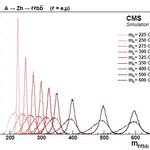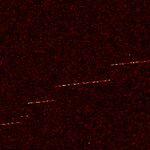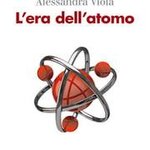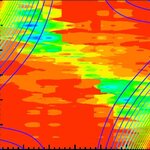Physics

Detecting ionizing radiation does not mean that a disaster
has or will occur. Detecting radiation
is generally a good thing if the radiation is expected, intended or
natural. We and all living things on earth
are naturally radioactive. This is due
primarily to our requirement to have a healthy level of potassium and carbon in
our bodies (and these are both naturally radioactive).
It is not difficult to measure small fractions of the
radiation coming from natural sources.
This includes alpha, beta and gamma radiation coming from radon in the
air and all of its…

"B.W. Lee also carries much of the responsibility for calling the Higgs boson the Higgs boson, mentioning repeatedly 'Higgs scalar fields' in a review talk at the International Conference on High-Energy Physics in 1972."
J. Ellis, M.K. Gaillard, D. Nanopoulos, "An updated historical profile of the Higgs boson", arxiv:1504.07217.

First collisions of protons at CERN's Large Hadron Collider are expected to start the first or second week of June. The LHC was restarted in early April after a two-year pause to upgrade the machine to operate at higher energies for a second three-year run . At higher energy, physicists may see new discoveries about the laws that govern the universe and SUSY diehards - physicists who support the hypothesis of space and time called SuperSymmetry - maintain hope new discoveries bolster them and change the current accepted theory of physical reality, the Standard Model.
This time everyone is…

When a feather or a plastic bag or almost anything light is
placed in water, these items will generally float. This is easy to understand if you think of
water being more dense than the other item.
If you put something heavier in water, it tends to sink like a rock or a
piece of metal but this doesn't fully explain how an iron ship can float. All of these effects are accounted for due to
a property all materials have known as buoyancy. Whatever item has more buoyancy is the item
that will float in the other. This
applies also to gaseous systems such as balloons…

I received from Ravi Kuchimanchi, the author of a paper to be published in Phys. Rev. D, the following summary, and am happy to share it here. The paper is available in the arxiv.
Are laws of nature left-right symmetric?
“I cannot believe God is a weak left-hander,” quipped Pauli when it was discovered that weak interactions act only on left-handed particles. However it is possible that at energies of ~10^14 or 10^15 GeV, which must have been present at the creation of the Universe, the laws of nature are invariant under parity or reflection, and do not discriminate between…

Besides being a giant triumph of theoretical physics and the definitive seal on the correctness of the Standard Model -at least at the energies at which we are capable of investigating particle physics nowadays-, the 2012 discovery of the Higgs boson by the CMS and ATLAS collaborations opens the way to new searches of new physics.
The Higgs boson is one more particle we know how to identify now, so we can now focus on new exotic phenomena that might produce Higgs bosons in the final state, and entertain ourselves in their search.
In addition to having one more particle to play with, there is…

Neutrinos are among the more mysterious elementary particles in the universe: Billions of them pass through every cell of our bodies every second, yet these ghostly particles are incredibly difficult to detect, because they don’t appear to interact with ordinary matter.
Scientists have set theoretical limits on neutrino mass, but researchers have yet to precisely detect it.
Yet now MIT physicists have developed a new tabletop particle detector that is able to identify single electrons in a radioactive gas. As the gas decays and gives off electrons, the detector uses a magnet to trap them in…

"The era of the atom" is a new book by Piero Martin and Alessandra Viola - for now the book is only printed in Italian (by Il Mulino), but I hope it will soon be translated in English. Piero Martin is a professor of Physics at the University of Padova and a member of the RFX collaboration, a big experiment which studies the confinement of plasma with the aim of constructing a fusion reactor (he is also in fact a member of ITER); and Alessandra Viola is a well-known journalist and writer of science popularization (among her books is "Brilliant green: the surprising history and science of plant…

I used to post on this blog very abstruse graphs from time to time, asking readers to guess what they represented. I don't know why I stopped it - it is fun. So here is a very colourful graph for you today. You are asked to guess what it represents.
I am reluctant to provide any hints, as I do not want to cripple your fantasy. But if you really want to try and guess something close to the truth, this graph represents a slice of a multi-dimensional space, and the information in the lines and in the coloured map is not directly related. Have a shot in the comments thread! (One further…

On April 11th 2015 I delivered a presentation on the subject of Quantum Gravity in which I questioned the basic assumption that quantum is more fundamental than relativity. Relativization is the name for the approach I propose. In a nutshell let us try treating relativity as the more fundamental set of principles and make quantum field theory obey those. The talk was well received. There is still lots of work do on this and a lifetime to do it in, but the approach is now firmly not "crackpot". Indeed as the money plot from my presentation shows this…